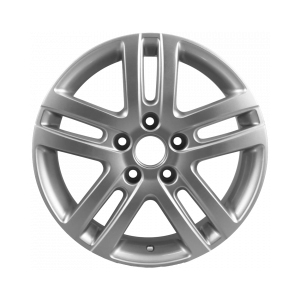rear axle drive shaft seal
Understanding Rear Axle Drive Shaft Seal Importance and Maintenance
The rear axle drive shaft seal is a crucial component in a vehicle's drivetrain system, playing a vital role in maintaining the overall functionality and longevity of the vehicle. Understanding its purpose, functioning, and maintenance can help vehicle owners ensure a smoother driving experience and avoid costly repair bills.
What is the Rear Axle Drive Shaft Seal?
The rear axle drive shaft seal is designed to prevent the leakage of fluids from the rear axle, which is critical for the proper functioning of the differential and gearbox. Primarily made from rubber or synthetic materials, this seal fits around the drive shaft, creating a tight barrier that protects the internal components from dirt, debris, and moisture while keeping the lubricant intact.
Importance of the Rear Axle Drive Shaft Seal
1. Fluid Retention The primary function of the seal is to keep the axle lubricant within the differential housing. This lubricant is essential for reducing friction between moving parts, which helps in ensuring smooth operation and enhances the lifespan of the vehicle.
2. Prevention of Contaminants The seal protects the internal workings of the rear axle from external contaminants such as dirt, water, and other debris that can enter and cause significant damage over time. By maintaining a clean environment within the housing, it ensures optimal performance.
3. Avoiding Major Repairs A failing or damaged drive shaft seal can lead to fluid leaks, which can result in insufficient lubrication. This can cause overheating and wear on the differential and axle components, leading to costly repairs or even complete failure.
Signs of a Failing Rear Axle Drive Shaft Seal
rear axle drive shaft seal

Awareness of the signs indicating a potential failure of the rear axle drive shaft seal is crucial. Some common symptoms include
- Fluid Leaks Puddles of oil or grease under the vehicle, particularly after it has been parked, can indicate a leaking seal. - Whining or Grinding Noises Unusual noises from the rear axle may suggest that the lubricant is low due to leakage, leading to increased friction and wear on components.
- Vibration Excessive vibration while driving can be an indicator of misalignment or damage related to the drive shaft or its associated components, often linked to seal failure.
Maintenance Tips
To ensure the longevity of the rear axle drive shaft seal, regular maintenance is paramount
1. Regular Inspections Periodically inspect the undercarriage for signs of fluid leaks and monitor fluid levels in the differential.
2. Fluid Changes Follow manufacturer-recommended fluid change intervals to ensure proper lubrication and performance.
3. Prompt Repairs If any symptoms of seal failure are noticed, it is essential to address the issue promptly. Replacing a worn or damaged seal can prevent more extensive and expensive damage to the rear axle assembly.
In conclusion, the rear axle drive shaft seal may seem like a small component, but its importance to vehicle functionality cannot be overstated. By understanding its role, recognizing signs of failure, and adhering to maintenance practices, vehicle owners can ensure that their automobiles continue to operate efficiently and avoid unnecessary repairs. Being proactive about maintenance and repairs can contribute significantly to the overall health of your vehicle's drivetrain system, ensuring a smoother ride for years to come.
-
The Ultimate Guide to Boat Propeller Bearings and Trailer Wheel Bearings
News Jul.31,2025
-
The Essential Guide to Marine Bearings and Boat Trailer Wheel Bearings
News Jul.31,2025
-
The Complete Guide to Heavy Duty Seals: Protecting Doors and Spaces Efficiently
News Jul.31,2025
-
Essential Guide to Marine Shaft Bearings and Boat Trailer Axle Bearings
News Jul.31,2025
-
Comprehensive Guide to Marine and Trailer Bearings for Safe Boating and Transport
News Jul.31,2025
-
Comprehensive Guide to Automotive Oil Seals: Protecting Your Engine and Shafts
News Jul.31,2025
-
Understanding Automotive Oil Seals: Essential Components for Engine and Shaft Protection
News Jul.30,2025
Products categories















